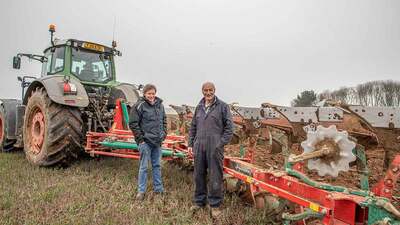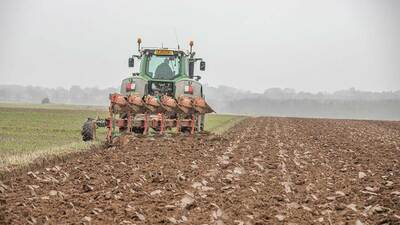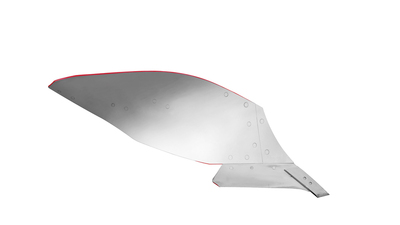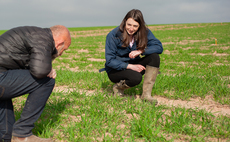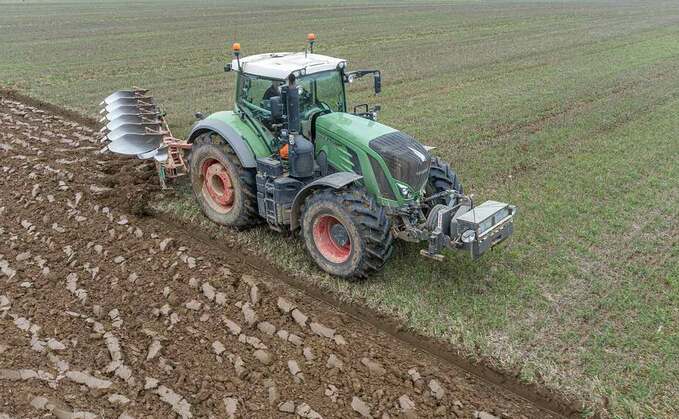
It takes a bit of skill to get it right, but on-land ploughing could be the answer to keeping a light tread when you need to invert the soil, utilizing wider wheels without damaging already formed furrows. Jane Carley reports.
Despite the growth of min-till practices, the plough is still an essential tool on many farms, to prepare land for root crops or to offer flexibility to cope with changing conditions. Specifying the right plough to produce a quality finish and preserve soil structure is then the next challenge.
FJ Clabon and Partners ploughs around 200 hectares each year to prepare land for potatoes and peas at Rookery Farm, North Walsham.
The 800ha farm is run by Bob Clabon and his brother Philip who also grow wheat, barley, sugar beet and oilseed rape, mainly in a ‘low till' regime, but as Bob Clabon says: "The plough allows us to have all bases covered."
In preparation for autumn 2019, a five-furrow Kverneland LO mounted on-land/in furrow plough was purchased, seeing a return of the brand to the farm.
"My father had a Kverneland plough 30 years ago, but when the local dealer switched franchise, we changed to a Lemken. It is a good enough plough, but when we began to use 710 tyres on the tractor to cut compaction we were having to run on the front furrow. We switched the mouldboards but we just could not get a good enough finish," Mr Clabon explains.
He spotted the LO plough with number 38 bodies in a Kverneland flyer, and asked dealer TNS if operator Stephen Puncher could try it out.
The no.38 body is specifically designed for tractors with large tyres, using its longer mouldboard to create a large empty furrow, and offering low draft characteristics. Kverneland bodies undergo 12 hours carburizing heat treatment process that is supposed to give increased wear resistance and the flexibility to absorb impacts.
A parallel linkage system hydraulically moves the plough into position and vari-width offers infinite hydraulic furrow width adjustment, both managed from the cab.
"We had never heard of that plough but it did a good job in the demonstration so we decided to purchase it. We initially chose a five-furrow model thinking it would be enough for our Fendt 930 to pull, but it actually moves through the soil so well we have added another furrow."
The plough is generally used on-land, with the experience of Mr Puncher proving key.
"There is more grip and it avoids compacting the soil in the furrow," says Mr Clabon. "Stephen has been ploughing for 40 years and used a nine-furrow in his previous role. GPS on the tractor makes it easier, but he often works without it to move around and get the ploughing exactly right."
This is the first on-land plough on the farm, and Mr Clabon comments that it also protects the tyre side walls against cuts from flints in the soil. However, the LO can also work in the furrow if it is too wet on top.
"Stephen likes to lightly cultivate after harvest to give improved crumbling, so if it turns wet we can go back into the furrow. We find that the plough pulls so easily, probably due to the design of the mouldboard which encourages the soil to slide off, we have been able to go up to six furrows, and although it mainly works with the 300hp Fendt, our 240hp New Holland T7.270 will also pull it."
Using the hydraulic vari-width, the LO is generally set at 400-410mm furrow width and works at a depth of 350-370mm for potatoes; it also has subsoilers fitted on three or four furrows to offer some deeper loosening.
Despite this it is frugal on fuel, as Mr Clabon points out: "Using cruise control, the Fendt is only working at about 1,300rpm."
Although the farm is gradually reducing ploughing, having stopped ploughing sugar beet, in 2020 the wet autumn meant that sugar beet ground going into wheat was ploughed and power harrowed.
"How much we plough really depends on the year and the conditions," says Mr Clabon.
Most ploughing takes place in November and December before the land is left to weather, although some land is spread with chicken muck once the application window re-opens and ploughed subsequently, and he reckons that outputs are around 1.25ha/hr, although smaller fields on rented land affect work rates.
Build quality is proving to be satisfactory and Mr Clabon rates Kverneland wearing parts highly.
"We have not had to do anything to the plough other than fit the usual wearing metal. I always buy genuine parts - some of the tungsten tipped generic parts are OK, but I am loathed to move away from Kverneland parts."
Mr Puncher is also the farm's fitter so maintains as well as using the plough and reports it is the ‘best he has had'.
Mr Clabon agrees: "It has been well worth the move to this plough as we are getting the finish we need while preserving the quality of the soil."
